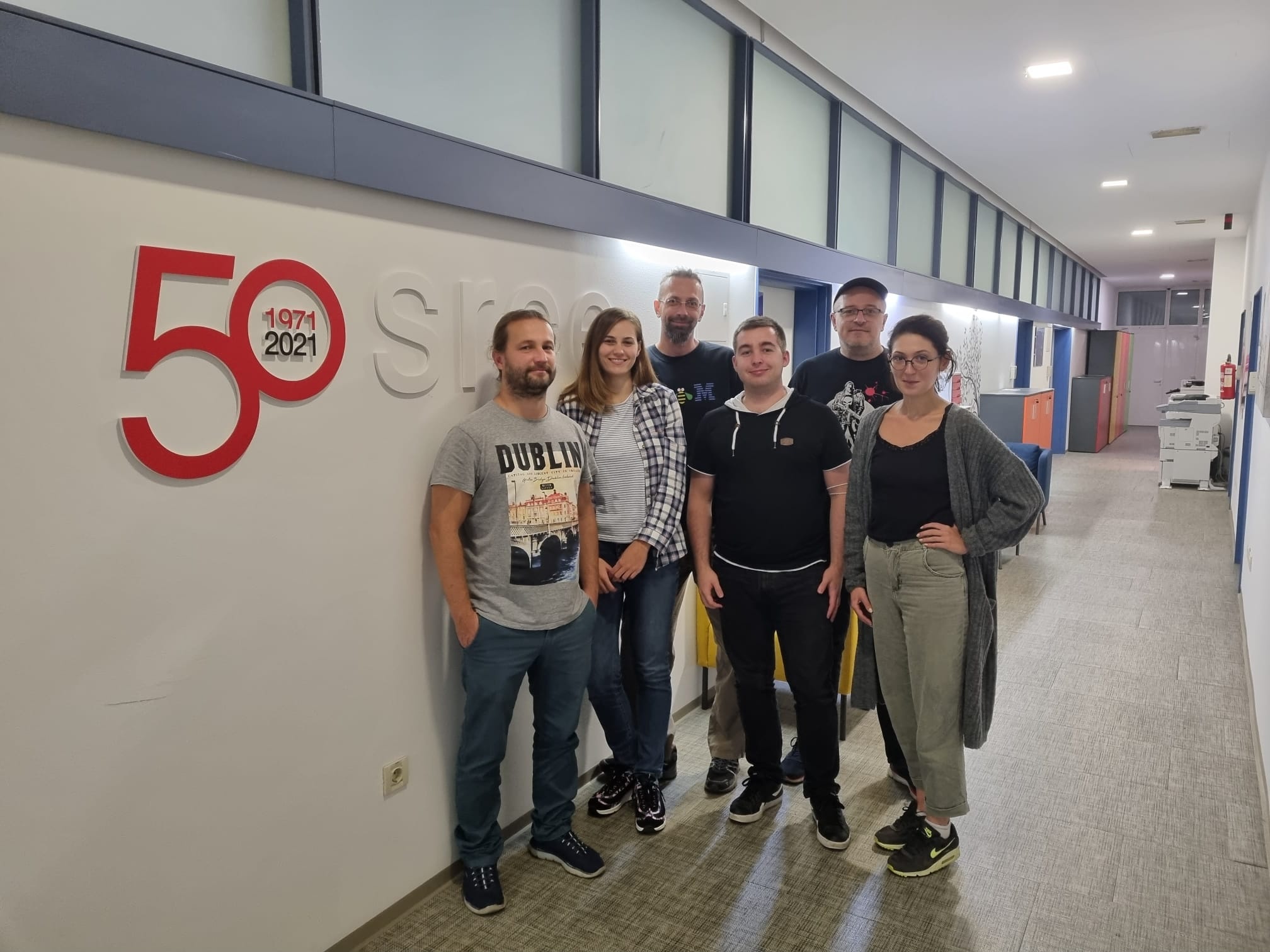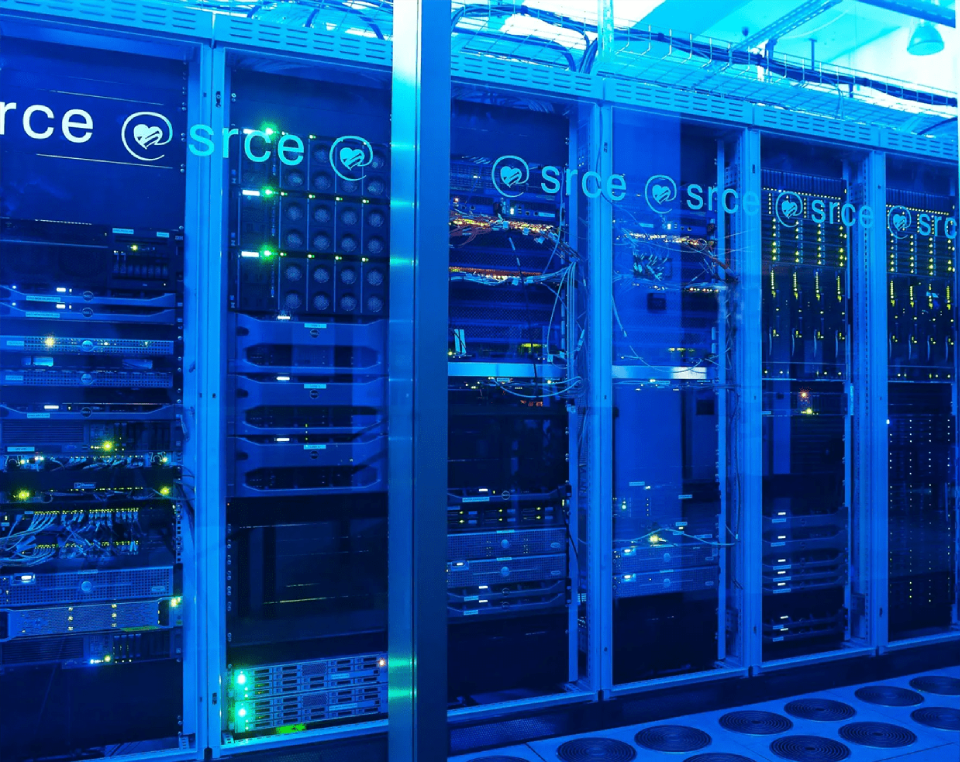
welcome
Foreword
This year, 2021, the University computing centre SRCE celebrates 50 years since its founding. We dedicated this website to this significant anniversary for SRCE, but also for the academic community and the entire Croatian society. In addition to an overview of selected moments from the history of SRCE, the oldest documents and photo gallery, every month during the anniversary year we will present one of today's most important services or projects by which we are continuously ensuring a stable, reliable and high quality operation of the e-infrastructure for the entire science and higher education system of the Republic of Croatia and the support for its use. The English version of the anniversary web contains some of the content and direct links to SRCE service websites in English.
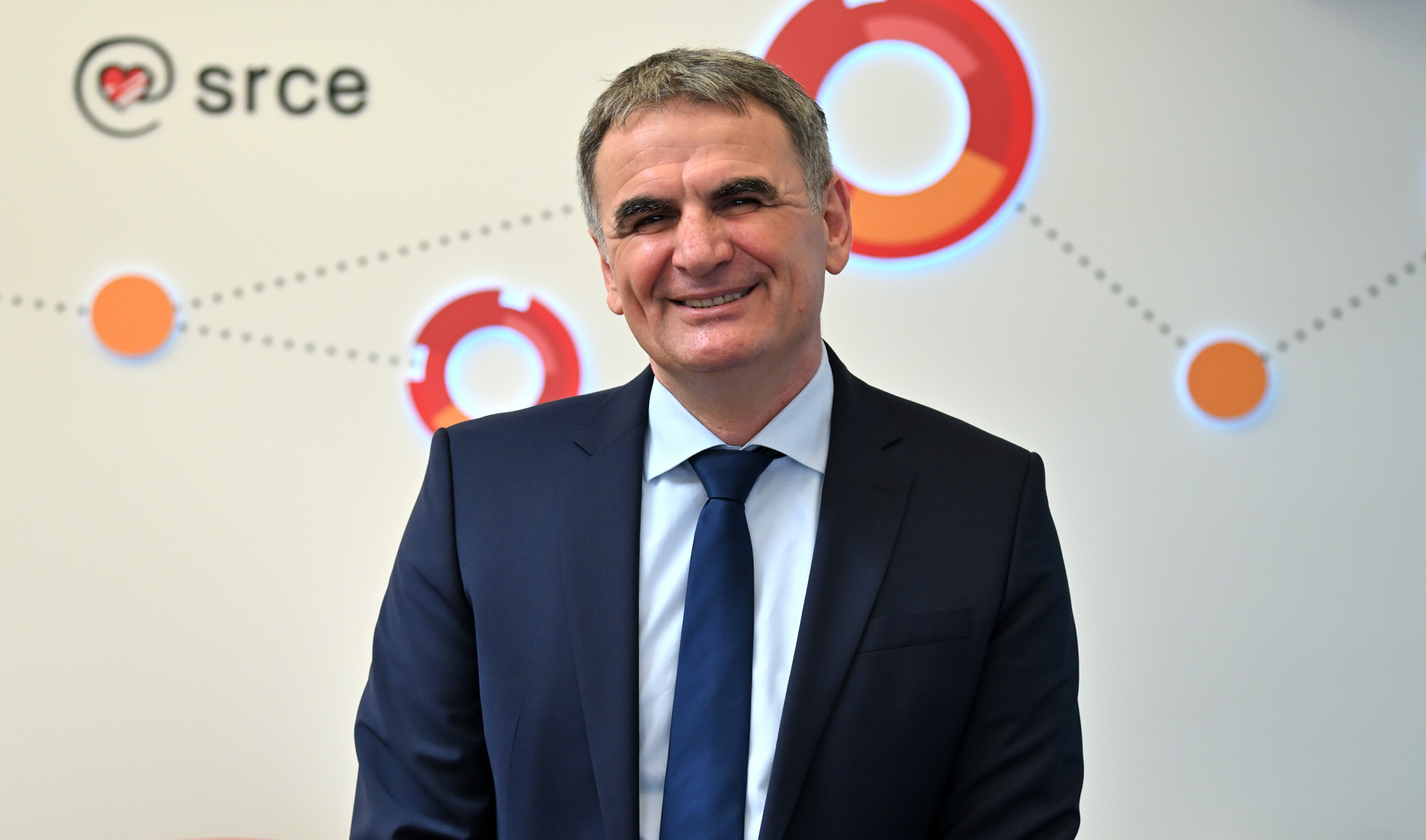
Ivan Marić, CEO of Srce from 1st April 2021, Ivan Marić, deputy director – CTO until 31st March 2021
Welcome message
Dear friends of the University Computing centre SRCE,
We are in a year in which the University Computing centre SRCE celebrates 50 years of its activity. The foundation of SRCE was a response to the needs of the academic community, but also of the entire Croatian society, to start a more systematic and comprehensive application of new information and communication technologies, thus modernizing and transforming education and research processes. Therefore SRCE has been, for fifty years now, in the very heart of what we today call the digital transformation of science and higher education.
With its activities, covering all layers of e-infrastructure, from data centres, through network, computer and storage resources, then the middleware, and up to information services and advanced user support, SRCE is a unique institution not only in the science and higher education systems, and not only in Croatia. This uniqueness has opened and still opens many opportunities both for SRCE and for science and higher education systems. Today, SRCE is a synonym for the national e-infrastructure of the science and higher education system and an indispensable factor in the digital transformation of science and education.
In the early 1990s, by building the national academic network on Internet protocol, SRCE played a key role in the birth of Internet in the Republic of Croatia. Today, hosting the Croatian national centre for the exchange of Internet traffic - CIX, we can say that we are the very heart of the Croatian Internet. In developing new strategic projects, we will be guided by the pioneering role of SRCE in the innovative introduction of new technologies and services, ensuring that the academic and research community are always one step ahead of other parts of society, for the benefit of the society as a whole.
SRCE was established fifty years ago with the task of providing the necessary mechanism to address the upcoming digital needs of the academic and research community. In order to carry out this task equally successfully in the future, we pay special attention to building bridges to key stakeholders in the science and higher education system in order to engage the community in building, managing and maintaining common components of e-infrastructure and digital services. Also, with our membership and participation in the work of international bodies, associations and projects, we build bridges connecting the Croatian national e-infrastructure with the pan-European one, with the aim of integrating the Croatian Research Area into the European Research Area (ERA) and European Higher Education Area (EHEA).
Thank you for joining us and for supporting us on this challenging and exciting journey that has been going on for fifty years now.
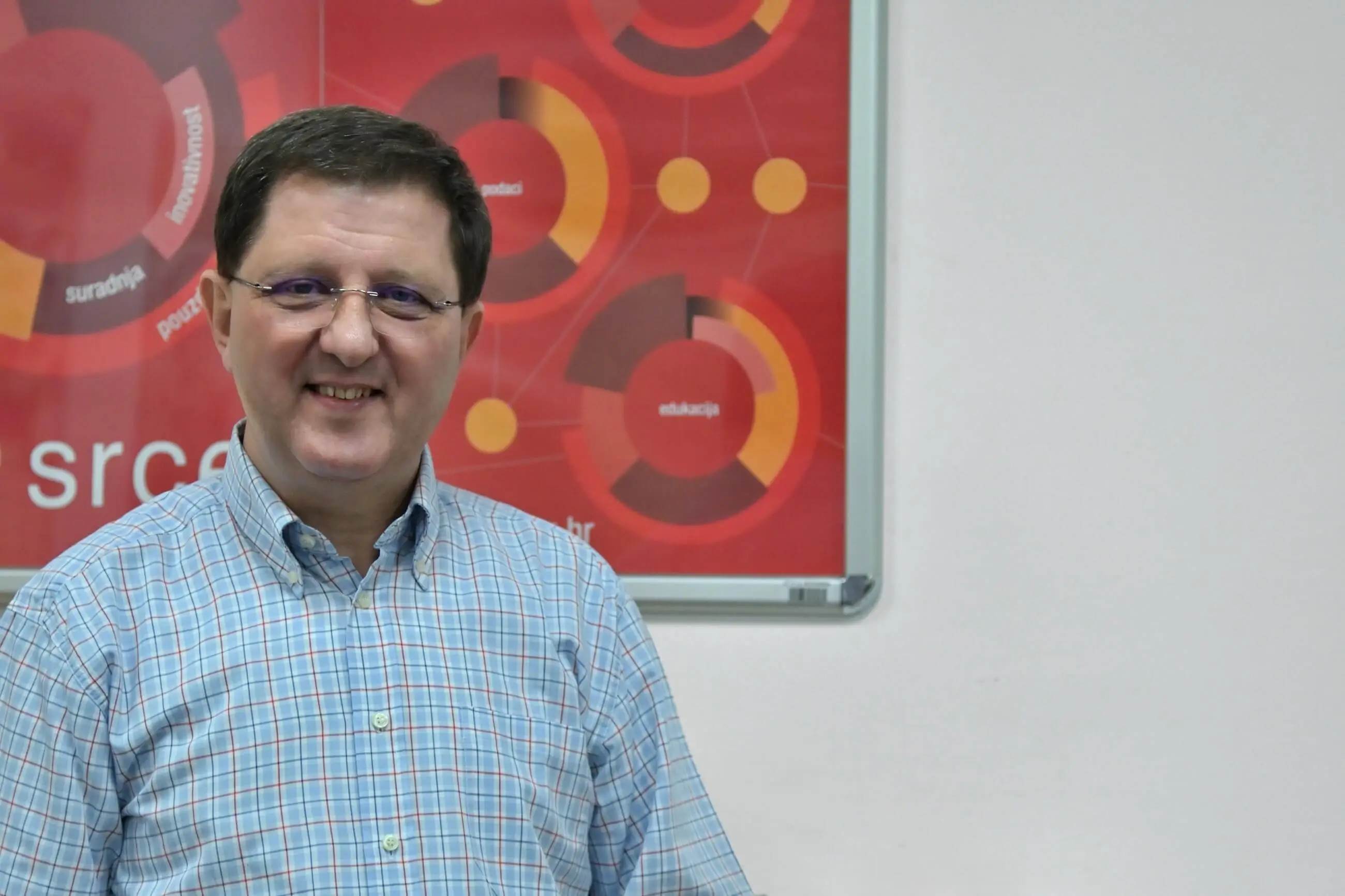
Zoran Bekić, Ph.D., Chief Advisor to CEO from 1st April 2021, director of SRCE until 31st March 2021
Established under the auspices of the University of Zagreb, at that time the only university in Croatia, based on the decision signed on 29 April 1971 by the rector Ivan Supek, SRCE has made and enabled many breakthroughs in the application of the latest technologies in science, education and also in the whole Croatian society. This is why we can really say that the history of SRCE is also an important part of the history of Croatian informatics. We present you a part of that history through a series of historical notes on this anniversary website.
Today, SRCE is building a modern e-infrastructure and a multitude of digital services for the needs of modern education and internationally relevant and recognizable research. Generally speaking, the activities of SRCE are focused on various aspects of effective data, information and knowledge management, which represent the fundamental values of every society, and especially the science and higher education systems. Apart from building the e-infrastructure and systems that enable data and information curation throughout their life cycle, SRCE is recognized for its support to all users and education and training programs, essential for technologies to come to full expression and realize their full potential.
In doing so, and especially in the last 20 years, SRCE has been paying special attention to connecting Croatian e-infrastructure with the European and global one, thus creating preconditions for connecting the Croatian educational and research space with the European one, enabling the flow of information and ideas, opening up space for cooperation and exchange of experiences and best practices, which are all characteristics of open education and open science, that SRCE today promotes, practices and enables through its services. As synonyms for a modern and high quality education available to all, and collaborative, transparent and fast-performing research, open education and open science today are certainly the guiding principles of SRCE on the way to new breakthroughs in the application of new technologies and the development of advanced digital services.
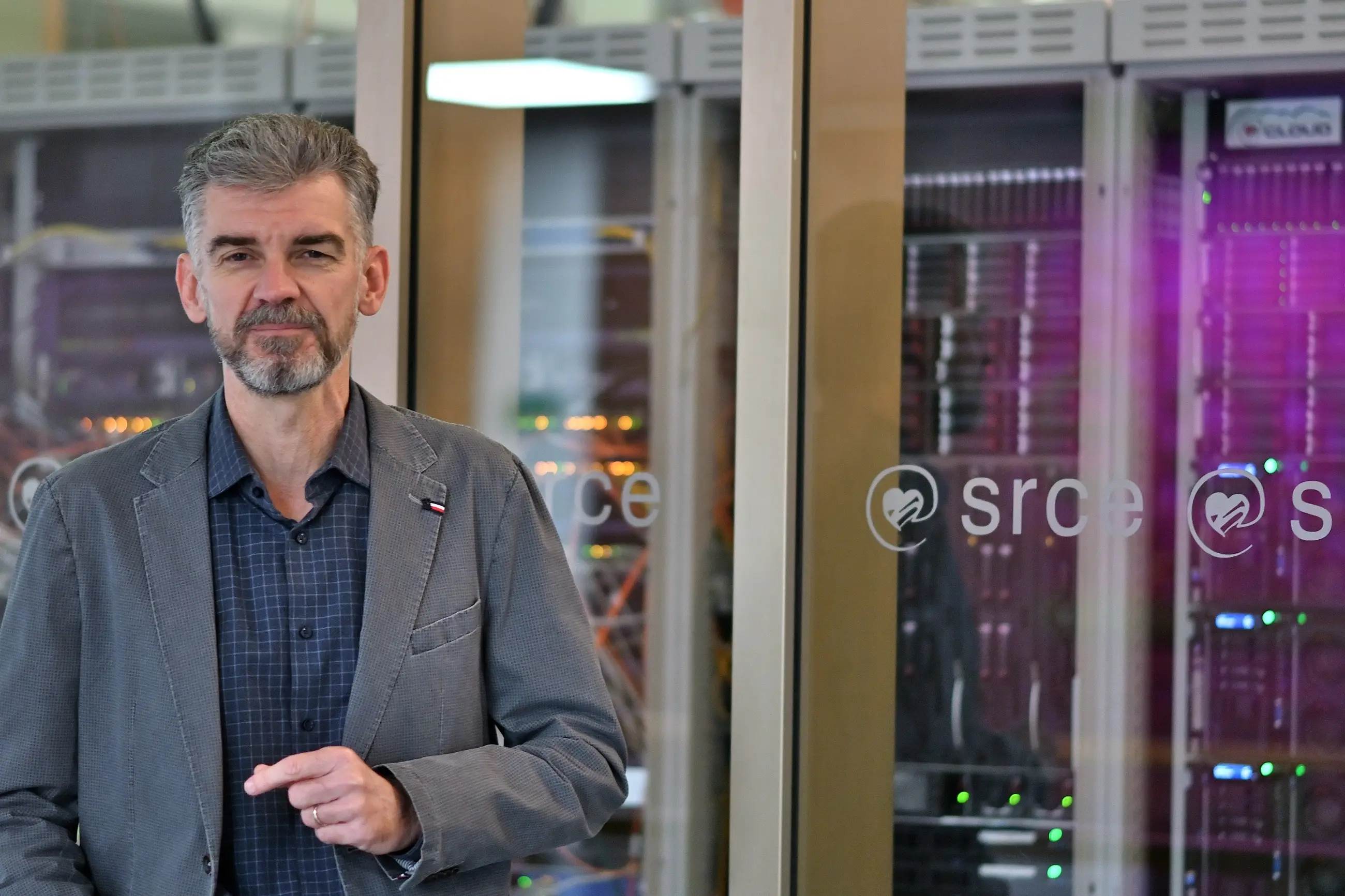
Dobriša Dobrenić, Deputy Director
It fills me with great pride to be in the very centre of the Croatian Internet, and not only to be there, but to literally create it. In 1991, the NSFNET network connected research and educational institutions in the USA (with some exceptions), but decided to open wide access to all ISPs that supported the TCP/IP protocol. Croatia was connected to DECnet network through SRCE, and there was a global war between OSI and “Internet” standards (TCP/IP), and in 1992 SRCE decided to go with Internet. This was not a move without risks and complications because it brought many adjustments to the existing network equipment, including the transition to completely new operating systems - from VMS to Unix. "The rest is history ..." For many years, there have been no ISPs in Croatia, so SRCE is the real centre of the Croatian Internet.
Today, SRCE creates and provides a number of fantastic information and data services tailor made for the academic and research community, as well as unique national systems, such as the ISP Internet Traffic Exchange Center in Croatia or advanced computing resources. The heart of these systems of SRCE at the technical level is the computer-network infrastructure (CNI), and its very essence are people, experts planning, developing, tirelessly looking after it and cherishing it. To someone with less love for technology it may seem boring to maintain routers, servers, storage ... but ensuring the balance between robots (IT equipment) and their needs on the one hand, colleagues who manage services and through them users and their requirements on the other hand, and finally the people from CNI who operate technical systems, I consider my favourite success in the past 28 years living in the very heart of SRCE.
In the future, SRCE has to continue to meet the needs of the research community that cannot be adequately met in the market, but also to be a pioneer in the implementation of new technologies, first for researchers, and then they will be transferred to other parts of the society – just like the Internet in the late 1990s. Maybe in ten years we will write that SRCE has introduced the first system for artificial intelligence in Croatia in 2021....

Sandra Kučina Softić, Ph.D., Assistant Director
Education plays a key role in the society, because only educated citizens can contribute to the development of a particular society and the realization of social and economic change. Education is essential for the development of citizens, starting from school to employment and throughout life, bringing them closer to everyday life and the world of work, and enabling them for modern life and for active participation in the society. Although SRCE has been operating for 50 years as the central infrastructure institution of the entire science and higher education system, the part related to education and training of users for the use of new technologies has been present since the very beginning of its operation.
Since early 1972, SRCE has been continuously preparing, organizing and conducting educational programs, courses and workshops in the field of information and communication technology and related fields, as well as in the field of statistics. Today information and communication technologies are an integral part of everyday life, they have a significant impact on learning, teaching and research, they have become an important factor in employment, and they are essential in many aspects of society. Therefore, in SRCE, we strive to provide citizens, and in particular teachers and students and IT specialists, the necessary training and education by choosing the appropriate courses. In addition to classroom courses, a large number of the self paced online courses are available, and since recently we have started with online courses with the guidance of lecturers. Within SRCE there is also the E-Learning Centre, providing support to higher education institutions, teachers and students at the national level in the implementation of e-learning in the educational process. Actively acting and considering which educational activities to offer to its stakeholders and how to proceed, in order for them to acquire the necessary knowledge and skills, and ensuring that information and communication technologies can be used easily and efficiently, SRCE contributes to the development of the society, and wholeheartedly shares the acquired knowledge and experience with the community, contributing to the digital transformation of the science and higher education system.
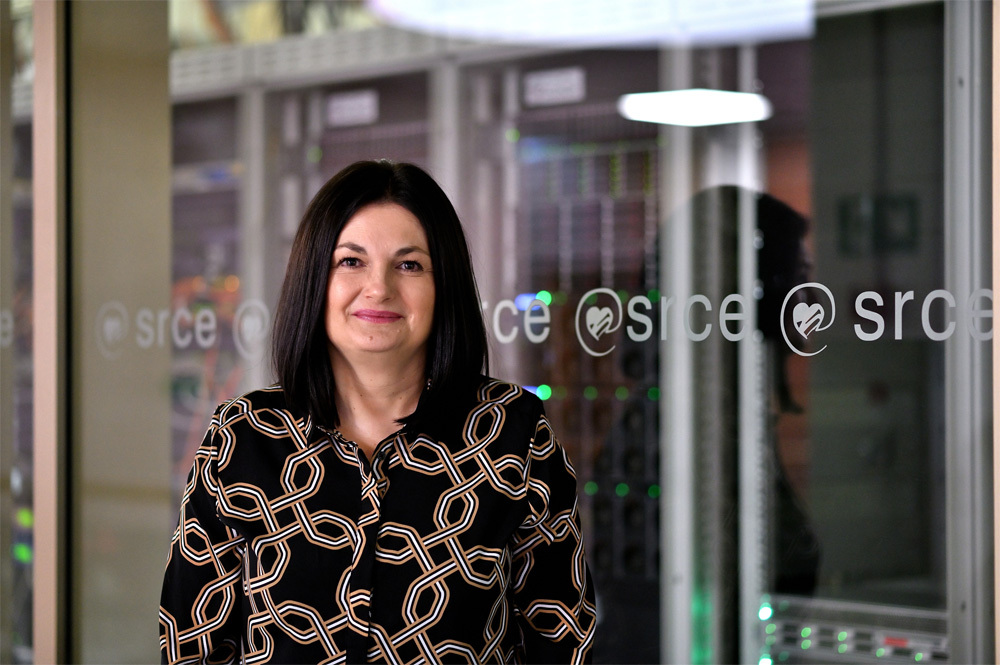
Milena Mrkonjić, M.Sc., Assistant Director
The business of SRCE is focused on quality and transparent performance of tasks in the field of finance, legal affairs and procurement, human resources, administrative affairs and maintenance of the devices and the office building of SRCE.
We pay special attention to the continuous development and management of human resources, which are the core value of SRCE. We aim to develop standards of excellence in human resources management through monitoring key HR indicators, and to become more accessible and visible to potential candidates in the labour market. It is extremely important to us that the employees of SRCE are satisfied with the management, internal communication, work tasks and working conditions, and we will pay special attention to the development of these segments in the future.
The team for devices and office building maintenance, through continuous work and commitment, provides a continuous, reliable and quality support to the existing e-infrastructure of SRCE.
In the upcoming period business steps will be focused on improving and developing a modern and high quality management system that will, along with new information and communication technologies, provide help for the governing bodies of SRCE in a more efficient decision-making.
In its work so far, SRCE has been a leader in the application of new information and communication technologies, and has enabled many breakthroughs in the application of the latest technologies in science, education and the entire Croatian society. I believe that in the upcoming period, with our high quality, excellent, motivated and internationally acknowledged employees, we will be able to continue our path of developing modern information and communication technologies.
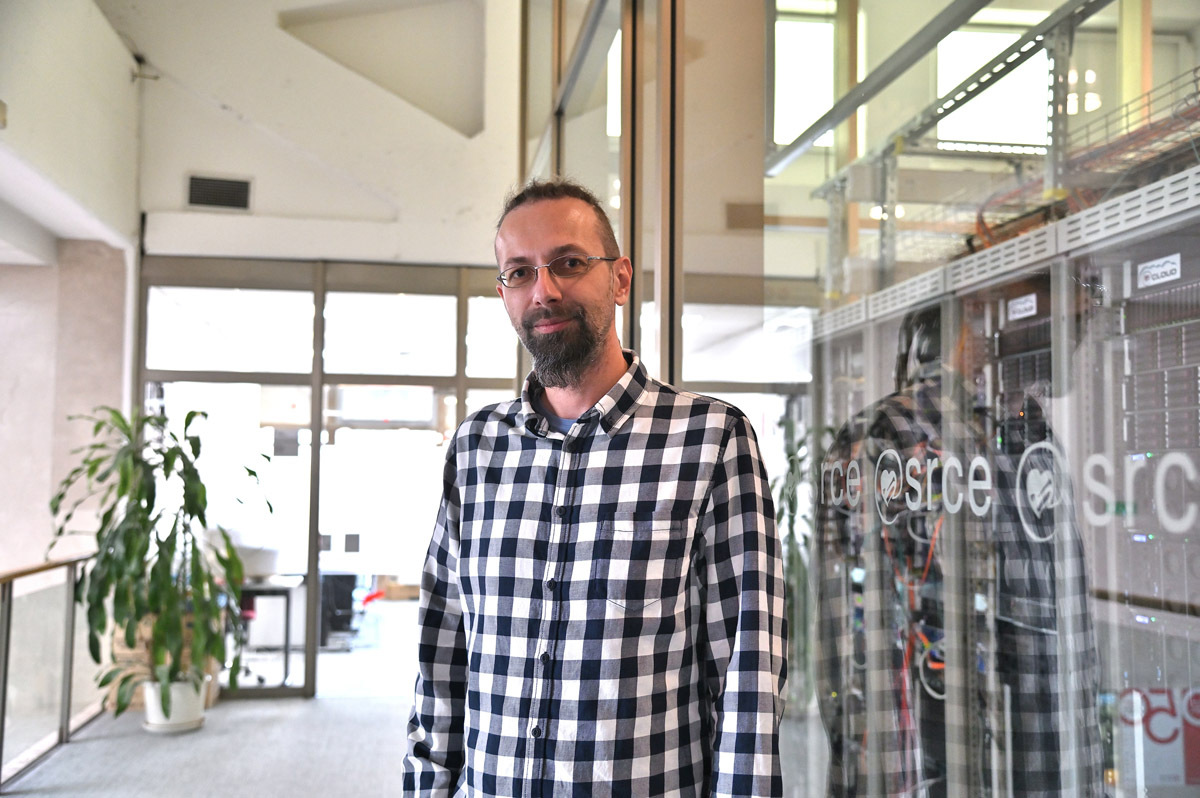
Ognjen Orel, Ph.D, Assistant Director
While watching the competitions at the 1984 Winter Olympics in my hometown, as a seven-year-old boy, I had no idea that our SRCE had established an information system and monitored all competitions, let alone that SRCE would become my second home. And by looking at just this one result, in a domain that is not primarily “ours”, the entire information network that monitored these and other sports games worldwide, it is impossible not of be proud of SRCE. And what about the remaining, almost countless data and processes that we are dealing with?
Namely, since the beginning, SRCE, as a part of the national academic and research community, has cultivated the collection and processing of information, primarily in the service of higher education and science. Various information systems have been designed, always with one thing in common – people that invested something more, pushing technological and organizational boundaries. With the advancement of technology and changes in society, systems and applications have changed, but the fact remains that for fifty years SRCE has been at the forefront of digital transformation from which we have learned for generations how everyday higher education and science can be easier, faster, better. Today, with its systems, SRCE covers the vast majority of data and information regarding science and higher education, with realistic plans to build additional systems that will complete the information landscape of this aspect of our society and become even more integrated into the European e-infrastructure, all by using leading technologies in software and operational engineering.
However, data and information are “only” the basis, the solid foundation of the knowledge pyramid - we build knowledge with information, and by applying knowledge we reach wisdom. SRCE is ready for the next 50 years of digital transformation: starting now, with data-based platforms for decision-making at all levels, knowledge discovery and application by data mining methods and artificial intelligence, and lastly celebrating its 100th anniversary with methods we may not even be able to imagine, but are looking forward to their research and application.
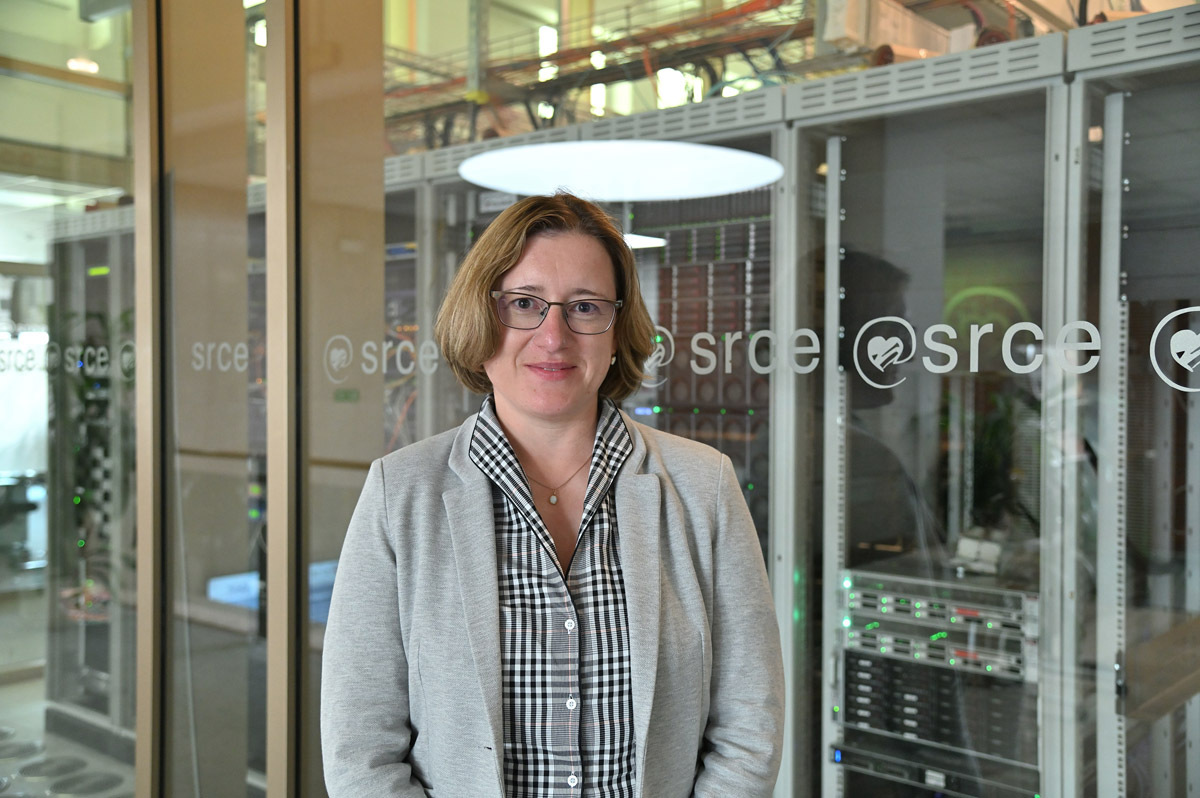
Sabina Rako, Assistant Director
Following the history of SRCE, looking at photos and observing the achievements of the first fifty years, it is impossible not to feel great gratitude to the founders of SRCE, visionaries who early recognized the advantages of applying technology in science and higher education. Interesting ideas but also people who have the strength, determination and knowledge to realize them – that is SRCE, tirelessly contributing to the digital transformation of science and higher education system.
Services and projects launched under the auspices of SRCE always strive to be, as far as possible, ahead of time and to facilitate research and educational processes at institutions in the science and higher education system in Croatia. At SRCE, we strive to improve and optimize our business processes in order to continue providing quality services to the community. At the same time, we perceive the needs of users and pay special attention to each user who contacts us or asks for help or advice.
Today, more than ever, the system of science and higher education faces great challenges and changes (but also opportunities), and SRCE will, as always, be at the disposal of the community by providing technological, professional and advisory assistance.
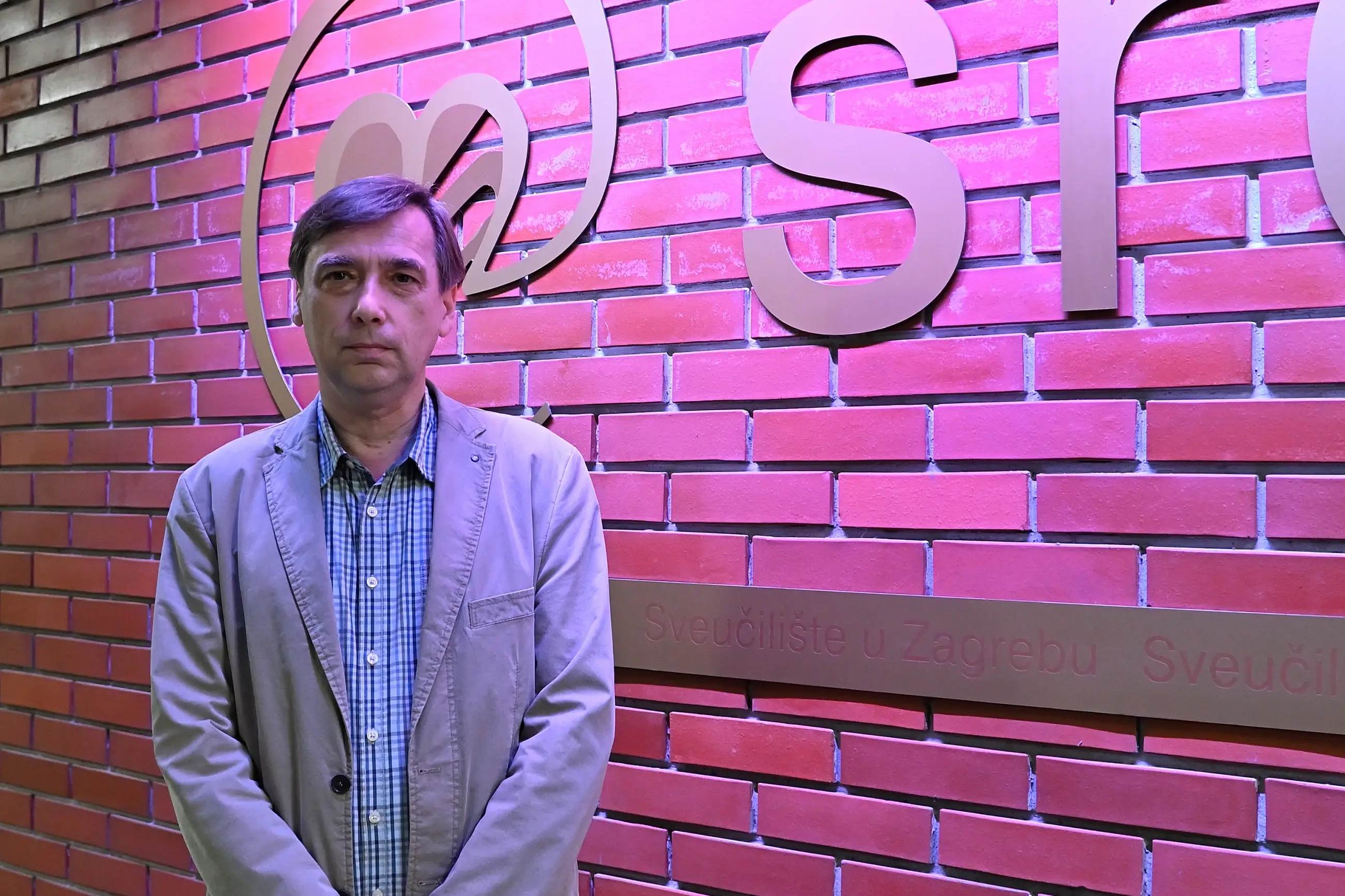
Vladimir Braus, Advisor to CEO from 1st April 2021, Assistant Director for Development and Quality Management until 31st March 2021
When I was first employed at the University of Zagreb, I had the opportunity to work with colleagues who had worked at SRCE from its very inception. At that time, SRCE had existed for 20 years. These colleagues' memories and their descriptions of SRCE's beginnings have been a great inspiration to me. Later, when I got a job at SRCE, it felt like I was coming to an environment I was already well acquainted with.
In its 50 years of existence, many things were changing and have changed at SRCE. Computer paradigms, technology, the social environment and the impact of informatics on society, standards and user expectations have changed. At the same time, the structure of its users remained stable. The primary users of SRCE always have been students, university professors and scientists. At certain periods, users from other environments would join them.
For me, the greatest achievement of SRCE is that, regardless of the circumstances and the severity of the challenges, it has always managed to offer a reliable IT support to its users, focusing not only on technical aspects, but also on consulting services. In addition, SRCE also represents an important educational space.
Today, SRCE is facing a new big challenge – the current challenge of the digital transformation. And this is a twofold challenge for SRCE. On the one hand, SRCE must provide its users with the tools required to support the digital transformation in their environments and the help necessary to make use of them. On the other hand, SRCE is also facing its own digital transformation. This may be the biggest, but also the most exciting challenge so far.

Miroslav Milinović, M.Sc. (1962. - 2021.), Assistant Director for Information and Middleware Infrastructure
Since its founding in the early 1970s, SRCE has established itself as a significant factor in the design, construction and maintenance of various information and application systems for the needs of the national research and educational community, as well as the society as a whole, collaborating with the research and education community on the one hand, and with relevant ministries and institutions of special importance for the Republic of Croatia on the other hand.
From foundation until today we are continuously present and achieving results in the field of application of new information and communication technologies. Every positive shift in the application of ICT in the Croatian academic and research community, especially at the University of Zagreb, is connected with SRCE as a collaborating or leading institution. These shifts were often significant for the entire Croatian society - let's just remember the program support for major sporting events or the introduction of Internet technologies. Thanks to SRCE, members of the academic and research community were the first to have the opportunity to use Internet services, and they were the first to receive electronic identities.
SRCE is characterized by continuous monitoring of the development and examining possible applications of new technologies on the one hand, and taking care of the establishment and maintenance, i.e. coordination of information, computer and communication services for the needs of science and higher education on the other hand.
It has been and remains challenging to take care of a range of existing services and, in addition, to consider how to use new technologies and solutions, introduce new services and transform the existing ones.
In its fifty years of work, SRCE has always relied on cooperation with its user community, the environment in which it operates, and on international projects.
I am convinced, however, that it has achieved its results and is still achieving them today, primarily thanks to its past and present human resources. I hope that this, in my opinion, core value of SRCE, will not only be preserved but also promoted.
SERVICES
Each month of 2021 we present one particular or a bundle of related services.
January
E-learning Centre
The E-learning Centre was established in 2007 as the unit in SRCE based on the outcomes of the international Tempus project EQIBELT with aim to enhance and support implementation of e-learning at the University of Zagreb, The E-learning Centre. Some of the basic objectives of the E-learning centre at that moment were:
 to provide support to
teachers and students,but primarily to cooperate
with and support e-learning groups and/or teams at faculties,
to provide support to
teachers and students,but primarily to cooperate
with and support e-learning groups and/or teams at faculties, to ensure a generally
accessible e-learning platform (LMS/VLE),
to ensure a generally
accessible e-learning platform (LMS/VLE), to ensure specific
joint/centralized resources required for application of
e-learning.
to ensure specific
joint/centralized resources required for application of
e-learning.
Over the years, the E-learning Centre justified its existence by maintaining and providing accessible, reliable and user-friendly e-learning platform Merlin and high quality support to teachers and students. This resulted in the increased number of users and expansion to other universities and higher education institutions in Croatia. Today the E-learning Centre team is the central unit providing support to higher education in Croatia in systematic implementation and use of e-learning in educational process on the national level. With more than 24.000 e-courses for the academic year 2020/2021, over 9.500 teachers and with more than 85.000 students the Merlin is the biggest and the most modern e-learning platform for higher education in Croatia. The support to users is one of the priorities of the E-learning Centre at SRCE and is carefully planned aiming to recognize specific needs of our potential and existing users. Besides the possibility to contact helpdesk, users can find manuals and guidelines, animations, frequently asked questionsand number of training courses (face to face and online) related to the use of Merlin and other tools the E-learning Centre provides: on the topic of course design, learning outcomes, multimedia and so on. The E-learning Centre is also active on the international level, collaborating with colleagues and teams from European universities, participating in the international projects, attending conferences and sharing its experience and expertise.
For more information about E-learning Centre visit: https://www.srce.unizg.hr/en/elc.
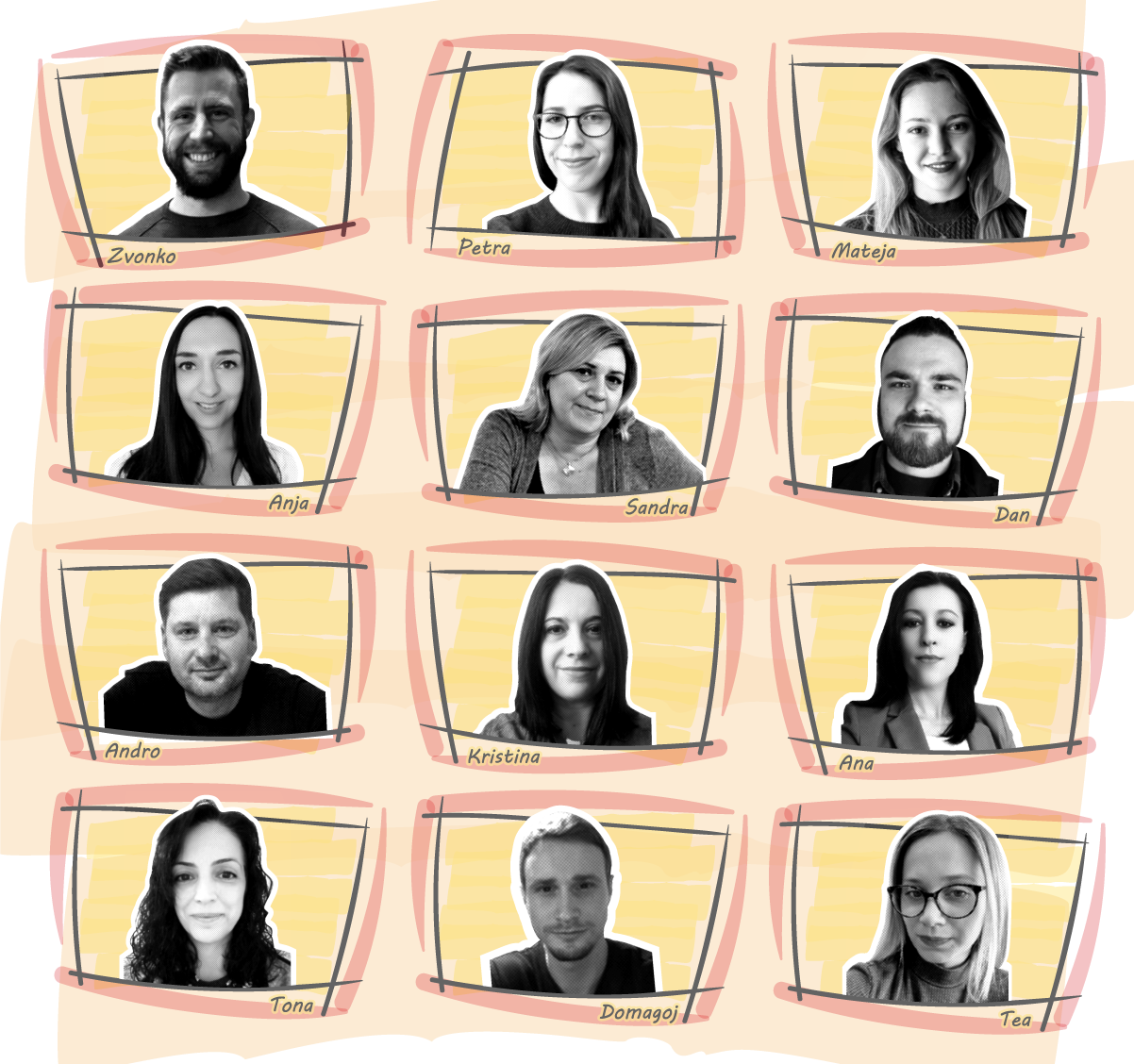
February
Educational Services
Since its foundation SRCE has been enabling the acquisition of new knowledge and skills on the application of technology to all interested users at higher education institutions and research institutes in Croatia. In our 49 year long tradition the educational offer has been adapting to the development of new technologies and the users’ needs. The rich history of the development of SRCE’s educational services can be viewed on the web page Crtice iz prošlosti (in Croatian). Here we highlight the services that today form the core of SRCE’s educational offer.
The basic educational programmes known as Tečajevi Srca include a vast range of courses that provide quality and diverse education in the areas of computer literacy, use of computer programs, the Internet and more. The list of basic educational programmes consists of more than 50 courses, both face-to-face and online. The participants in this educational programmes are mostly students, teachers and citizens.
Educational programmes for IT professionals consist of courses, seminars and workshops in the field of information and communication technology and infrastructure intended primarily for system administrators at higher education institutions and research institutes in Croatia. Our educational programme edu4IT, completely developed at SRCE, is part of a European Commission’s initiative “Shaping Europe’s digital future”. Our other popular programme is Linux academy. In order to inform our community about relevant news concerning system administration and software development we also maintain https://sistemac.srce.hr/ portal.
At our testing centre anyone interested in verifying acquired knowledge in the field of ICT can take exams and gain internationally recognized certifications available through Pearson VUE organization. The long-term quality of our work is regularly confirmed with exceptional results of external quality controls. Since 2003, when testing centres were established, more than 12 000 exams have been taken at SRCE.
We are also conducting activities related to data analysis in education and science. Those activities are divided in two main areas. The first area is the planning and organizing of educational programmes in order to train students to independently perform statistical and graphical data analysis with statistical software like R. The second area is preparing analysis and reporting based on available data in science and higher education, including academic analytics and learning analytics.
March
AAI@EduHr
Authentication and authorisation infrastructure of science and higher education in the Republic of Croatia - AAI@EduHr - is a middleware infrastructure whose basic task is to enable secure, reliable and efficient electronic identities management and their easy use for accessing network and networked resources.
AAI@EduHr has been proven as a key system that enables owners of electronic identities (scientists, teachers, students and pupils) secure and easy work in a virtual environment, which has been especially important in conditions caused by COVID-19 pandemic. At the end of 2020, the AAI@EduHr system encompassed 241 home organisations – identity providers and the central directory of all primary and secondary schools in the Republic of Croatia with a total of more than 920,000 electronic identities that their owners could use to access more than 860 different services. In addition, more than 4100 services from about 70 federations around the world are available through eduGAIN.
In 2021, AAI@EduHr celebrates 15 years since its launch: the system was launched on 1 March 2006. That year, AAI@EduHr was one of the first electronic identity federations in the global academic and educational community, with everything that makes this federation a circle of trust: organisational, informational and technical/technological rules (defined through the AAI@EduHr Policy and accompanying documents).
Its huge and lasting work, which makes the AAI@EduHr a rare case in the world, is a specific support to home organisations, and partly to service providers, through the maintenance of software packages allowing the installation of software to support certain functionalities on the selected platform (Linux Debian) (e.g. home organisation’s LDAP directory).
Srce is actively involved in international projects (e.g. MyAcademicID or as a CARNET partner in the GÉANT project series for more than 10 years) and working groups (especially within REFEDS community) dealing with issues related to middleware and authentication and authorisation systems.
Srce is recognized and accepted by international partners as the operator of national authentication and authorisation infrastructure and a reliable partner in building global middleware systems.
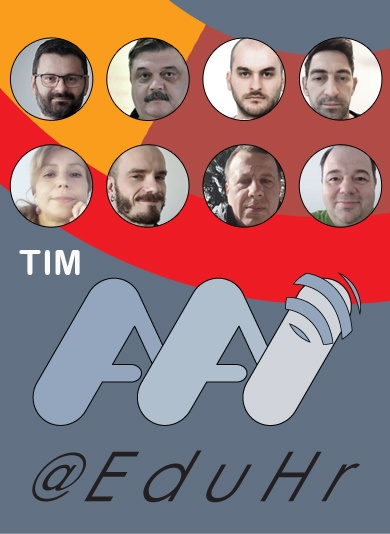
April
Advanced Computing
SRCE services Isabella and HTC Cloud provide advanced computing infrastructure enabling researchers to solve complex problems that require significant compute resources – processors, accelerators, memory, shared storage, scientific applications and environments. These services are part of SRCE’s research lifecycle ecosystem covering collection, processing and analysis phases.
Isabella is a High Performance Computing (HPC) cluster available to all Croatian researchers free of charge. Isabella provides users with:
 approximate performance of 150 TFLOPS
approximate performance of 150 TFLOPS 135 compute nodes
135 compute nodes 270 Intel processors (CPU) with total of 3.100 CPU cores
270 Intel processors (CPU) with total of 3.100 CPU cores 12 NVIDIA Tesla V100 graphical processors (GPU)
12 NVIDIA Tesla V100 graphical processors (GPU) fat node with 160 CPU cores and 2 TB of RAM
fat node with 160 CPU cores and 2 TB of RAM total of 16 TB of RAM
total of 16 TB of RAM 756 TB of parallel shared storage
756 TB of parallel shared storage 56 Gb/s Infiniband network.
56 Gb/s Infiniband network.

Apart from providing resources, SRCE assists researchers in optimizing their scientific application for execution on Isabella and provides training and helpdesk service. Scientific areas range from computational chemistry, biology and bioinformatics, physics and quantum physics, machine learning, mathematics and statistics and other scientific areas. There are over 50 scientific applications and libraries ready for use. Isabella is currently serving over 100 projects and about 300 users. Since the establishment, users have published about 350 publications based on research performed using Isabella.
Isabella was established in 2002 with 8 single processor nodes providing approximately 7 GFLOPS. Since then it went through over ten expansions, some of which were the first HPC implementations in Croatia: Infiniband network in 2004, ScaleMP vSMP single system image virtualization in 2014 and NVIDIA V100 GPUs with tensor cores in 2019.
HTC Cloud provides a cloud computing platform enabling users to deploy virtual machines and applications that require significant compute and storage resources. HTC Cloud provides flexibility in using and running various operating systems and applications, scaling machines on-demand and creating custom network topologies. It is ideal for applications not suitable for HPC clusters –data analytics with R Studio or Jupyter Notebooks, big data platforms such as Hadoop or Spark or any other application that require user interaction. HTC Cloud is based on open systems OpenStack and Ceph and provides 2.400 virtual CPU cores and 150 TB of storage.
SRCE is actively participating in international projects focused on the area of advanced computing. SRCE has participated in a line of projects building distributed infrastructure for researchers starting from EEGE-II in 2006 continuing through EGI projects until active projects – EGI-ACE and EOSC Future. Since 2020 SRCE is leading a consortium of Croatian institutions participating in the project The National Competence Centers in the Framework of EuroHPC (EuroCC).
The HR-ZOO project will provide the next generation of advanced computing resources to Croatian scientific and academic community. HPC component of HR-ZOO is planned to provide 1.4 PFLOPS and storage capable of achieving 100 GB/s. HTC component is planned to provide 15000 CPU cores, 2 PB of standard and 200 TB fast storage for virtual machines. In addition, most commonly used commercial scientific applications will be provided as well as a team of e-Scientists that will provide expert support to researchers.
May
The Information System of Higher Education Institutions (ISVU)
The Information System of Higher Education Institutions (ISVU) is a complex information system that supports business processes related to monitoring the course of study of students at higher education institutions in Croatia. It consists of several separate modules, which review and record data in a central database. The system records and stores data on students, teachers, courses, curricula, enrolment, exams, thesis topics and completion of studies. The modules support the standard activities of each higher education institution, such as student enrolment, exam scheduling, exam grade entry, completion of studies, issuance of various documents (certificates of enrolment and graduation, diplomas, certificates and supplementary study documents) and automatically create reports.
The modules are implemented using different technologies based on the Java programming language and are intended for different user groups within the higher education institution. The most numerous user group are students, there are about 140,000 of them. Module intended for them is web module Studomat, which is used for exam scheduling and cancelling, insight into exam data, year enrolment, printing of enrolment certificates and review of other data that are recorded for the student in the system. We also single out the web module Teacher's Portal ('Nastavnički portal'), which is used by teachers to edit the description and content of the course, the weekly curriculum, exam results and final/diploma assignments. Desktop modules are intended for ISVU coordinators, employees of student offices and other administrative staff of higher education institutions. The Study and Students ('Studij i studenti') module is the core module of the system in which the data is recorded to be used in other modules and influence their functionality and behaviour. It is used to record data on studies performed at higher education institutions, courses, curricula, enrolment rules, and data on students (from personal data, through data on enrolment years and financial obligations, to data related to the completion of studies). About 26,000 teachers and employees from 111 higher education institutions are registered in the system, and about 14,000 of them are also users of some of the system's modules. Also worth mentioning is the ISVU REST API, a programming interface that allows you to connect ISVU and other information systems. About 250 information systems retrieve and update data in the ISVU via the REST API. From 1st April 2013 until today, the ISVU REST API has processed over 3,200,000,000 requests.
The Ministry of Science and Education is the owner of the system, providing the funding necessary for its operation, development and maintenance, and allowing its free use to higher education institutions. The ISVU Support Centre in Srce takes care of ISVU and its users. In addition to ensuring the reliable and correct functioning of the system, it performs the development and expansion of the system in accordance with changes in business processes, either initiated by the Ministry of Science and Education or by higher education institutions that use ISVU. It also provides professional technical support in working with ISVU modules to users from higher education institutions, assists higher education institutions in implementing ISVU and conducting business processes through the system, educates users to work with ISVU modules through courses, meetings, manuals and instructions and in this pandemic time through webinars and online consultations. It provides direct support to users every working day from 8 am to 4 pm by answering numerous inquiries, problems and doubts they encounter when working with the system, and records, analyses and processes user requests for system changes and upgrades.
Despite some initial doubts about the viability of the system that is used by a large number of higher education institutions with very diverse business practices, ISVU marks this month (May 2021) 20 years since its launch.

June
Data centers and virtual servers
Data centers are special purpose facilities that house computing infrastructures as well as all accompanying mechanical, power, AC, networking, fire safety, and any other integrated systems. They are built around scale and capacity parameters required to reliably operate e-infrastructure components used in academic and computing communities.
SRCE is currently (June 2021.) managing two separate data centers (DC Srce1 and DC Srce2) with fully redundant physical components ensuring over 99% availability of services. These data centers are home to network and computing systems that form the infrastructure platform that runs most all other SRCE services.
Within the HR-ZOO project, five individual data centers in Osijek, Rijeka, Split and two in Zagreb will be constructed or adapted and equipped. This will provide fundamental conditions for the development of national e-infrastructure in the Republic of Croatia and for the development of local infrastructure for research, development and innovation on the universities in Osijek, Rijeka, Split and Zagreb, as well to create a foundation of national e-infrastructure to be used in R&D and innovation projects, for the entire Republic of Croatia as well as regional and local research centers and hubs.
During the past 17 years, SRCE primary virtualization infrastructure went through development phases that included several hardware platforms from various manufacturers as well as all VMware vSphere versions up until the latest 7.0U2 release that currently runs on 16 DELL 740xd host servers in two data centers (DC Srce1and DC Srce2), and houses total of 413 virtual machines within a high availability software platform used for most internal and public services operated by SRCE on behalf of the academic and scientific community (Dabar, AAI@EduHr, Hrčak, ISVU, ISSP, Merlin and many others).
In 2012 SRCE, built upon already many years of experience in maintaining and operating virtualization platforms, decided to form a cloud-paradigm based service which would allow external users (academic partners and research institutes) access to and unrestricted control over various types of virtual resources, while preserving all features and advantages of running within a virtualized environment.
Today this service is a home to over 350 virtual machines used by over 100 individual academic partners and institutes.


July
ISSP - ISAK Information system of Student Rights and Academic Cards
Information System of Student Rights is used to collect data on students, relevant for determining the level of student rights according to their student status. Croatian ministry of science and education is the owner of the System. Various user demands rely on information about the rights and status of the student. Therefore, the system is highly modular and easily adjustable to fit the needs of various student services suppliers.
The information system ISAK (Academic cards information system) was designed for the purpose of running and managing processes tied to the life cycle of official student ID cards granted to them by their head institution. The cards are based on smart-card technology, and Croatian ministry of science and education is the owner of the System.
The student card is an official and public document, that is used to prove student’s status, and each student is obligated to own a card. Postgraduation students and international mobility participants are also granted a student card. ISAK handles data collection and the preparation of card printing throughout the whole year.
The main user of the ISAK system is the card printing company - all the relevant data is supplied to them by the ISAK system. Another feature of the system is status tracking of the processes during the card's lifecycle (ordered, printed, etc.). The company that handles printing and distribution, does so independent of SRCE.
Croatian higher education institutions use a solution developed by SRCE to input student data, request card printing and handle publishing and card activation.
The most well-known service the ISSP system provides is the system of student nourishment. The purpose of the system is the precise record keeping of student consumption and enabling various amounts of subsidies, in accordance to guidelines defined by the Ministry.
Through an application developed by SRCE, the service providers of student nourishment keep track of the usage of student nourishment subsidies. The authorization of the process is maintained via the student card.
Croatian ministry of science and education as the owner of data in ISAK and ISSP, can grant the right to use relevant data to other systems. ISAK and ISSP through ISSP REST API serve various student services suppliers.

August
Data services and digital repositories
This bundle refers to a group of services and activities related to reliable storage and sharing of digital content with the strong intention to support and promote Open Science.
As a support during the research and teaching processes we provide PUH - a service that allows users to store and share files using SRCE’s cloud system. PUH addresses specific needs of researchers for reliable storage and sharing of data during research projects and the needs of lecturers for storage and sharing of large amounts of educational content that cannot be stored within the e-learning system. Currently, PUH is used by 417 researchers and lecturers.
Researchers can publish articles in one of the Croatian Open Access (OA) journals on the Portal of Croatian scientific and professional journals - HRČAK. We developed HRČAK with the goal to promote OA and to give journal editors a platform to freely publish their journals. As part of HRČAK, we provide editors with OJS - a tool for managing the entire submission and editorial workflow. We are also promoting good practices in scientific publishing such as the use of ORCID identifiers and advanced file formats like JATS-XML. More than 240,000 articles from 507 journals are currently available to users in OA.
Institutions and research communities can gather and publish results of their researchers, associates and students using Digital academic archives and repositories - DABAR. DABAR is a national infrastructure for digital repositories that currently hosts 150 repositories of Croatian research and HiEd institutions. Examples of digital objects that can be stored in repositories are articles, research data, theses, educational content, project documentation, artistic content, etc. There are more than 158,000 objects currently published in DABAR. Recently, the emphasis was placed on promoting support for research data sharing according to the FAIR data principles.
Together with the National and university library in Zagreb, SRCE developed the Croatian Web Archive (CWA). The aim of CWA is to preserve the Croatian web which is a significant part of Croatian cultural and scientific heritage. CWA currently offers unrestricted access to 90+ TB of archived websites harvested over the past 17 years.
In 2019 SRCE became a national Research Data Alliance (RDA) node. As a national node SRCE works on the joint mission of the RDA organization which is to build the social and technical bridges that enable open sharing and re-use of data. In cooperation with the national RDA community SRCE made a handbook How to manage research data and is currently developing a series of courses on good practices in research data management.
Furthermore, SRCE also participates in the project National Initiatives for Open Science in Europe - NI4OS Europe, in which SRCE, as a EOSC member, seeks to bring together national open science initiatives, to be the leader in establishing of the national open science cloud (NOSC), and to on-board national initiatives, services and datasets in EOSC.
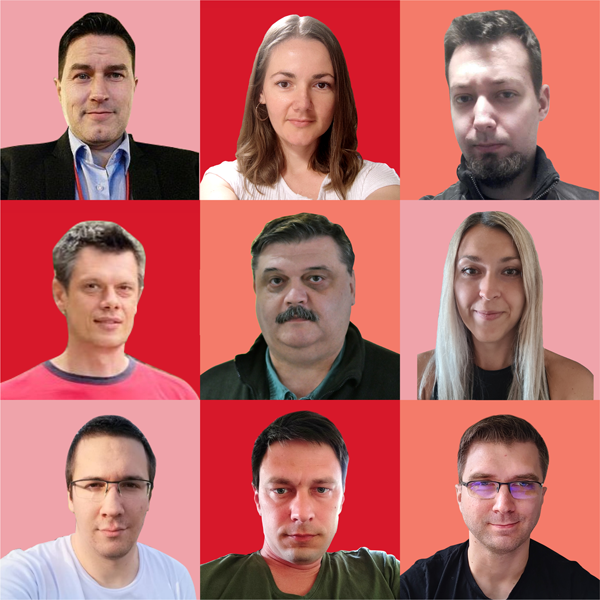
September
Srce network infrastructures and services
To ensure the availability of Srce services to end users these services must be accessible over a computer network and that makes Srce network infrastructures foundation of all other Srce services. Srce network infrastructures must ensure sufficient capacity and high reliability with adequate security and business continuity with all the negative scenarios that can occur: failure of individual network devices or connections between network devices and even the failure of entire data sites.
When end users are accessing Srce services, they are passing through a number of network infrastructures, which are managed by different entities. In the same manner, Srce network infrastructure is built on a series of network infrastructures that are specific because they serve different users, use different technologies or have more or less importance. Some of the major network infrastructures and Srce services are:
- Srce LAN and WAN networks that ensures the availability of Srce services to end users and secure access for service administrators,
- CIX which ensures the exchange of Internet traffic for all Internet service providers in the Republic of Croatia (commercial, non-commercial and private networks),
- BCBN network in University Campus Borongaj that provides network services for Campus users,
- WLAN network that manages a large number of wireless access points in dormitories and higher education institutions,
- VoIP that provides an Internet telephony service for Srce and other higher education institutions.
Srce has a long tradition (do you remember the mainframe/terminal network?) in maintaining computer networks created for the needs of the scientific and educational (higher education) community in the Republic of Croatia.
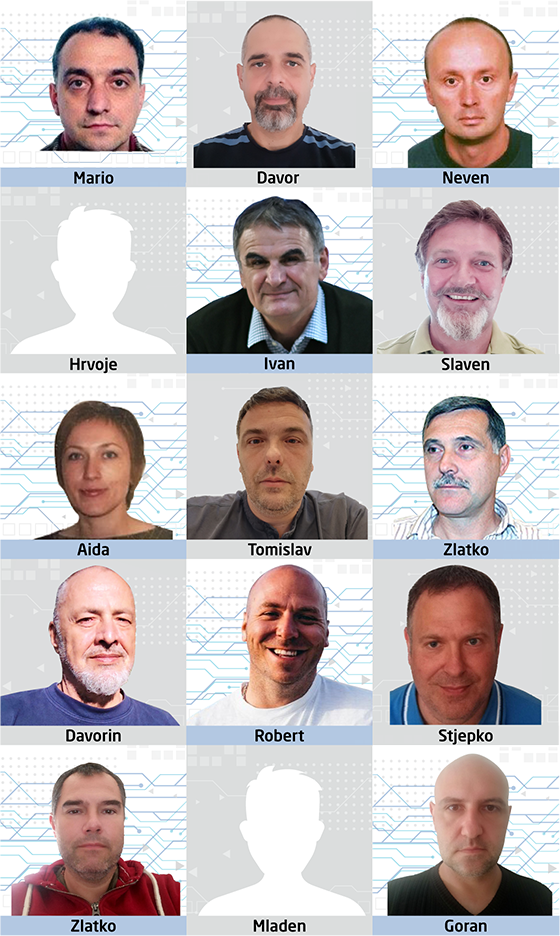
Building of CARNet network
In that period, the most important and probably the most familiar to today's generation is a role that Srce performed for a full 17 years (from 1992 to 2009). This was the role of the CARNet Network Operation Center (NOC), where we can single out three periods/phases that (technologically) marked the Srce NOC: the initial phase of the Internet in Croatia from year 1991. to 1995. when CARNet was launched as a project, the ATM phase of the CARNet network from year 1995. to 2003. and the (Gigabit) Ethernet CARNet phase until year 2009. As a reminder, construction of the IP protocol based network and the connection of Croatia's Internet with the world was "done" by the team of the University Computing Center (Srce) within the project of building a national academic network - Croatian Academic and Research Network CARNet. The first Internet connection between Croatia and the world was established on November 17, 1992.
CIX
One of the Srce significant network infrastructures last year celebrated 20 years of existence. Of course, this is CIX (Croatian Internet eXchange), a Croatian Internet traffic exchange center housed in Srce, open to all Internet service providers in the Republic of Croatia, both commercial and non-commercial, or private networks. CIX has grown more than 7,000 times since its beginnings, from a modest 1.9TB (07/2003) to 13.5PB (07/2021). With CIX, we have come a long way from an informal place where two interested enthusiasts connected to improve service for their customers while reducing costs, to an orderly system with policy, structure and highly reliable service.
StuDOM
Srce started and for many years was a support center for StuDOM - the network infrastructure of student dormitories. This ultimately resulted in more than 11,000 wired connections in student rooms with a bandwidth of up to 1Gbit/s, which is the largest wired LAN infrastructure in Croatia. Access to this wired infrastructure is compatible with the eduroam (R) standard and as such is among the largest wired eduroam installations in the world. StuDOM infrastructure includes 11 student dormitories in 7 Croatian cities.
Top-level .hr domain
At the end of year 1992. as part of establishing a national academic and research network, Srce took the necessary steps to register the national Internet domain of the Republic of Croatia. On February 27, 1993, the Internet Assigned Number Authority (IANA) registered and enabled .hr domain, which was administered by Srce until 31 December 2011.
In addition, since the functional beginnings of the national top-level domain, Srce has been providing the service of a secondary domain server. For many years, the bjesomar.srce.hr server was, initially the only one, and later one of the obligatory secondary servers for the domains of the science and higher education institutions. Currently, Bjesomar is a secondary domain server for more than 600 domains.
Team
The work of the Srce "networkers" is not monotonous or easy. What the user sees as (one) error, for us can be stretch through several devices, so in most cases we are forced to do diagnostics from end to end of the network, "jumping" from one device to another. Ultimately, we have more terminals on different devices, so it can happen that we "jump" to the wrong device, but about these anecdotes on some other occasion.
Network infrastructures and HR-ZOO project
The HR-ZOO project aims to build a network that will ensure broadband connectivity for the HR-ZOO data centers and thus enable the implementation of distributed computer and storage resources. This new network will be built with data transmission capacities of 100Gbit/s, will have high reliability, and will provide users with virtual private network services (L2VPN or L3VPN). The project will also upgrade the backbone of the CARNET network. The project will build a modern network infrastructure of HR-ZOO data centers that will connect all computer and storage components, providing network switching, routing and security services at speeds up to 100Gbit/s.
October
CroRIS - Croatian research information system
As a part of the Scientific and Technological Foresight project (STF), lead by the Ministry of science and education, Srce is creating a national research information system, abbreviated as CroRIS. CroRIS is designed to integrate a large amount of data regarding scientific research in Croatia, including: data about researchers, institutions, projects, research work, publications, products, patents, equipment and its usage etc. CroRIS is being created in an environment where some of the existing data is only partially connected. It will integrate a number of existing systems and software solutions, while connecting with others, including international systems. Work on the system is ongoing, with the end of 2022 as a planned completion date. CroRIS will be made available in a number of phases, as each program module is completed. The current plan of completion and the availability of modules can be seen on the picture below. A large part of data contained within the CroRIS will be publicly available, while any changes and data editing will be made by authorized users. These users will have a number of roles within the system, from researchers and institutional data administrators to institution management and employees of key national bodies. A CroRIS coordinator role is also planned on an institutional level - their function will be to maintain the operation of CroRIS in their home institutions and to be a link between their institution and the system administrators. All users will access the system using the Authentication and Authorisation Infrastructure of science and higher education in Croatia (AAI@EduHr).
A substantial part of program modules will be developed with interoperability in mind. CroRIS will be integrated with national bodies, higher education institutions, research institutes, libraries and other institutions, connect with businesses and the economy, and promote open science. Interactions are planned with information systems of Croatian Science Foundation, National and University Library, Ministry of Economy and Sustainable Development, Ministry of Public Administration, with Dabar, Hrčak, Mozvag and ISVU systems, and with international systems such as Web of Science, Scopus, OpenAIRE, ORCID etc. A number of other data and software systems will be able to connect to CroRIS using a universal application programming interface which is also being created (pictured).
